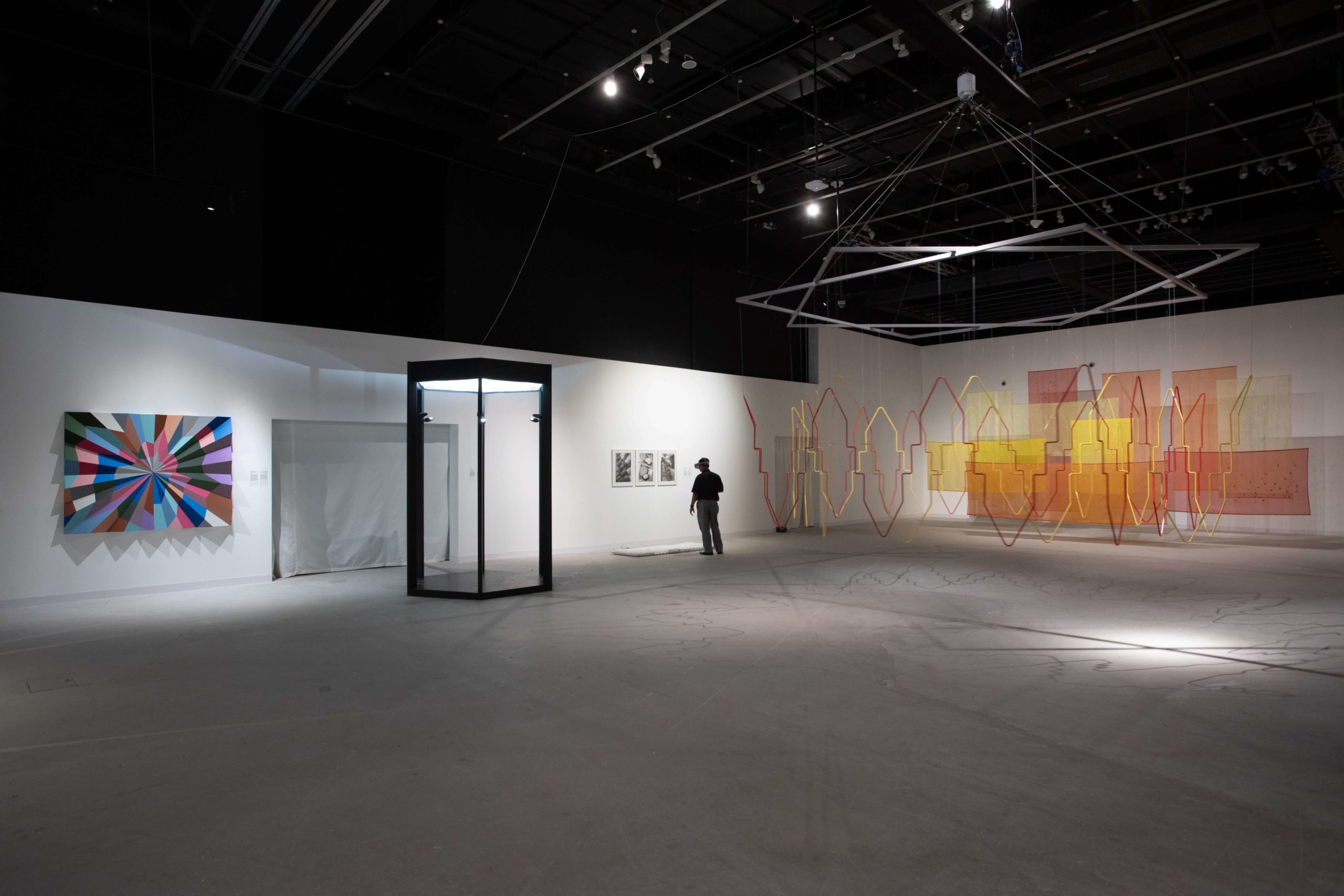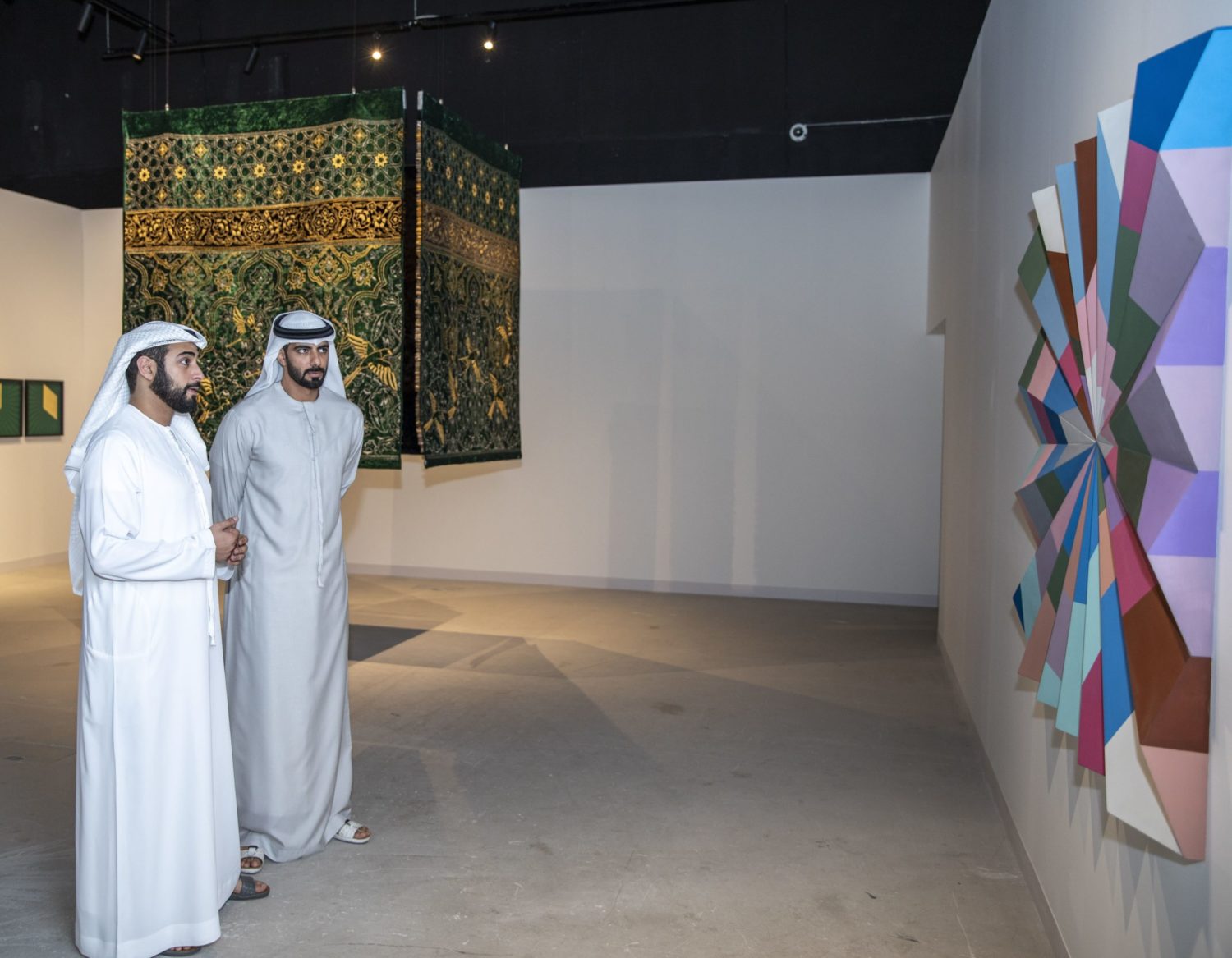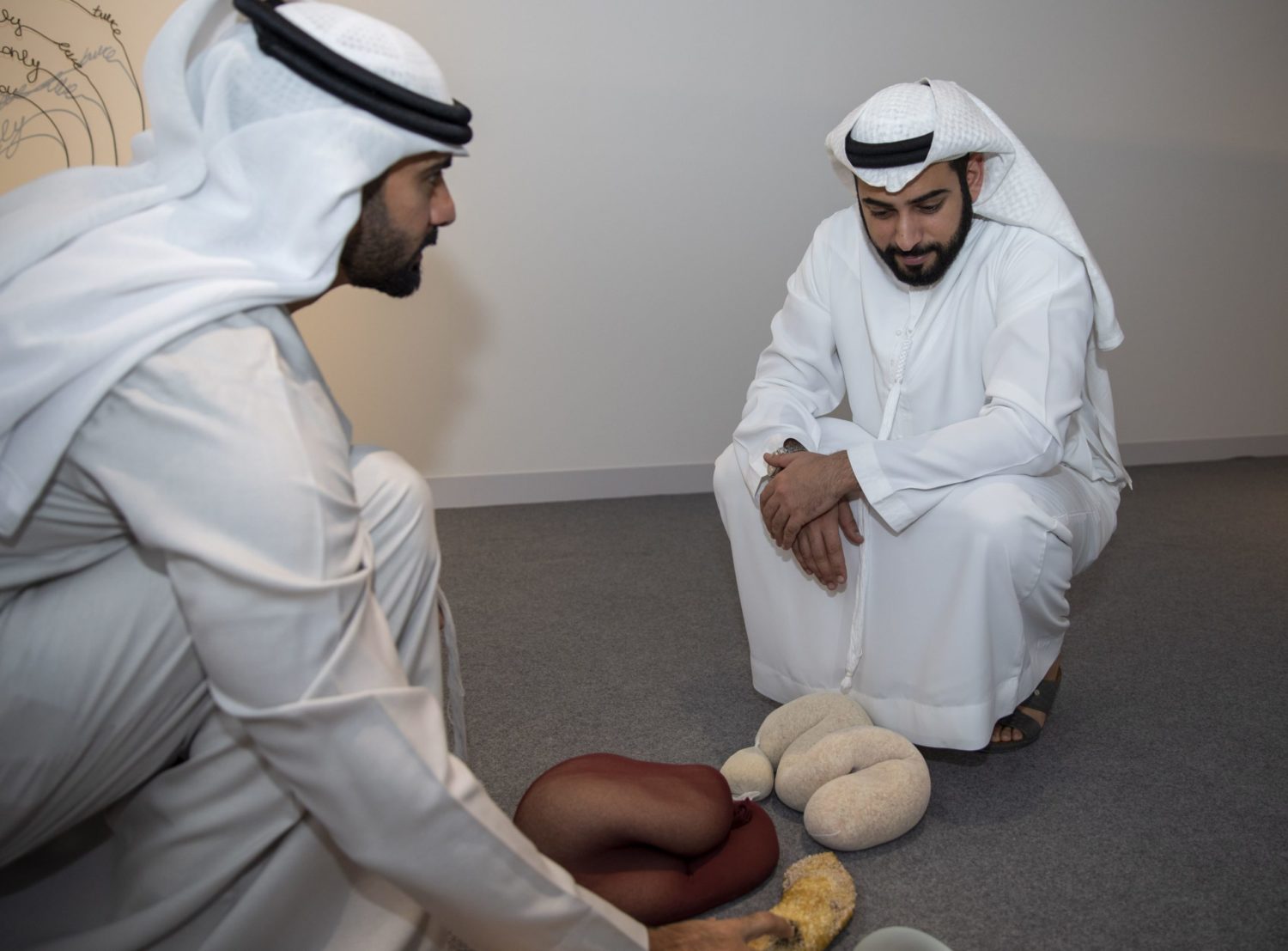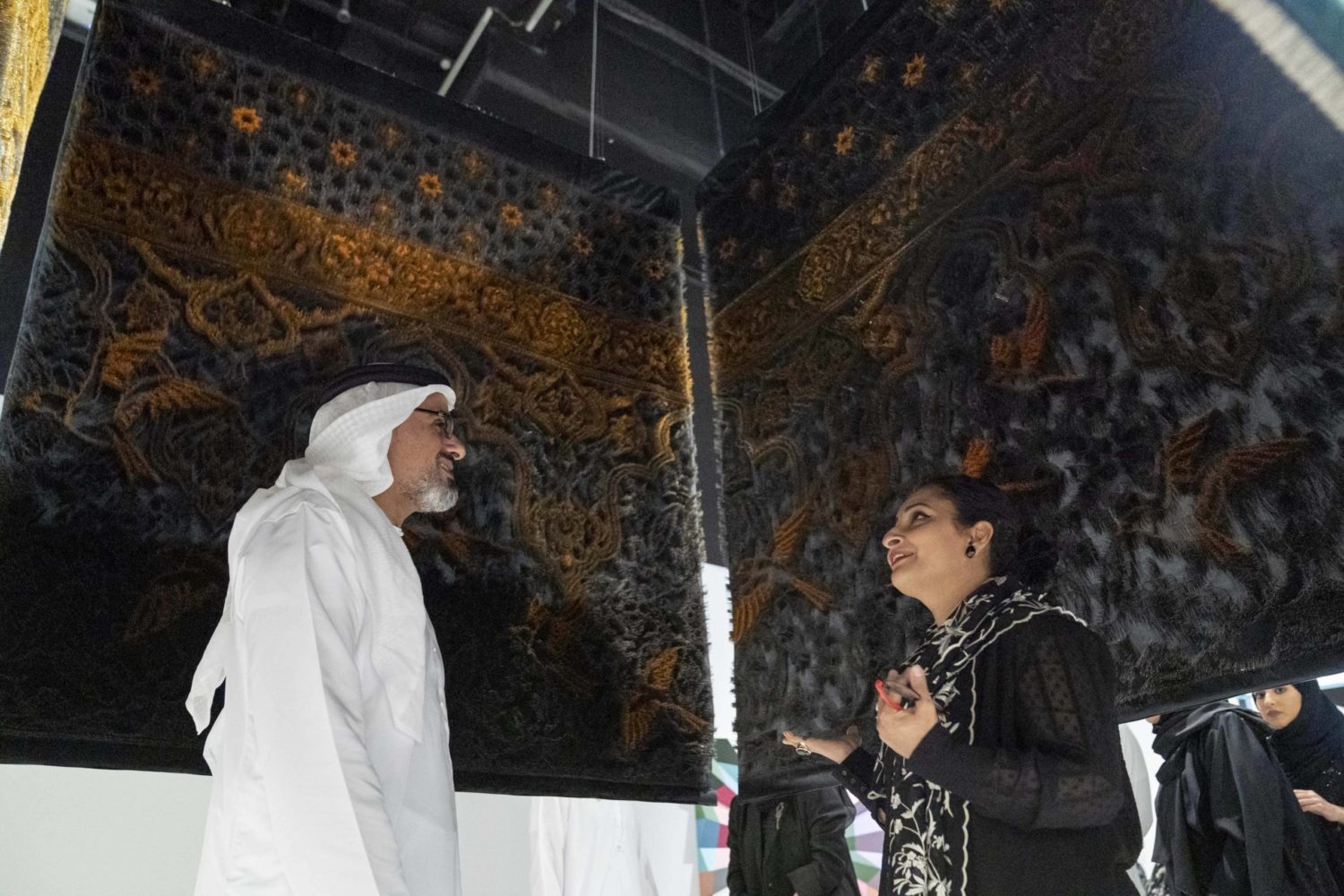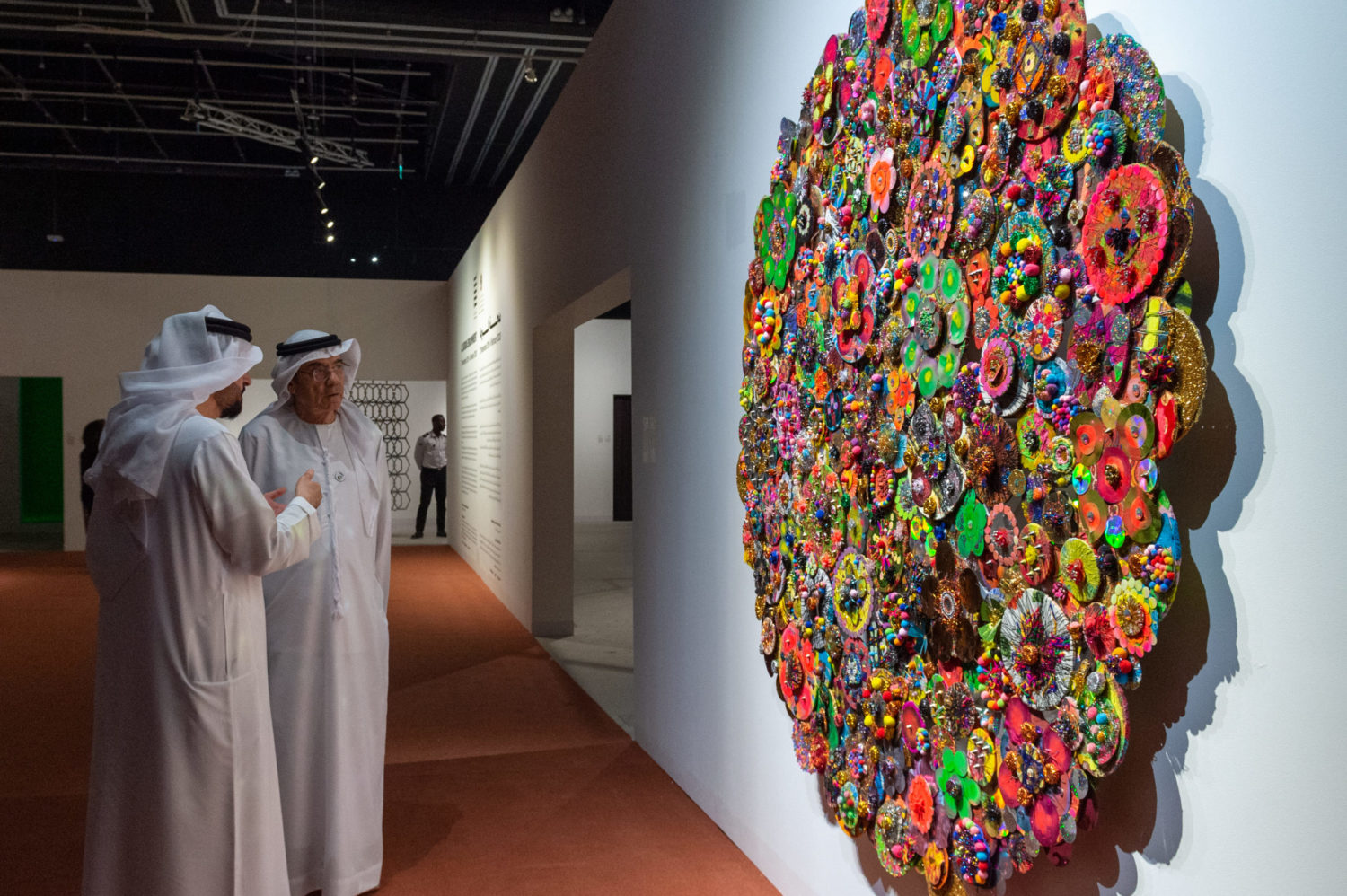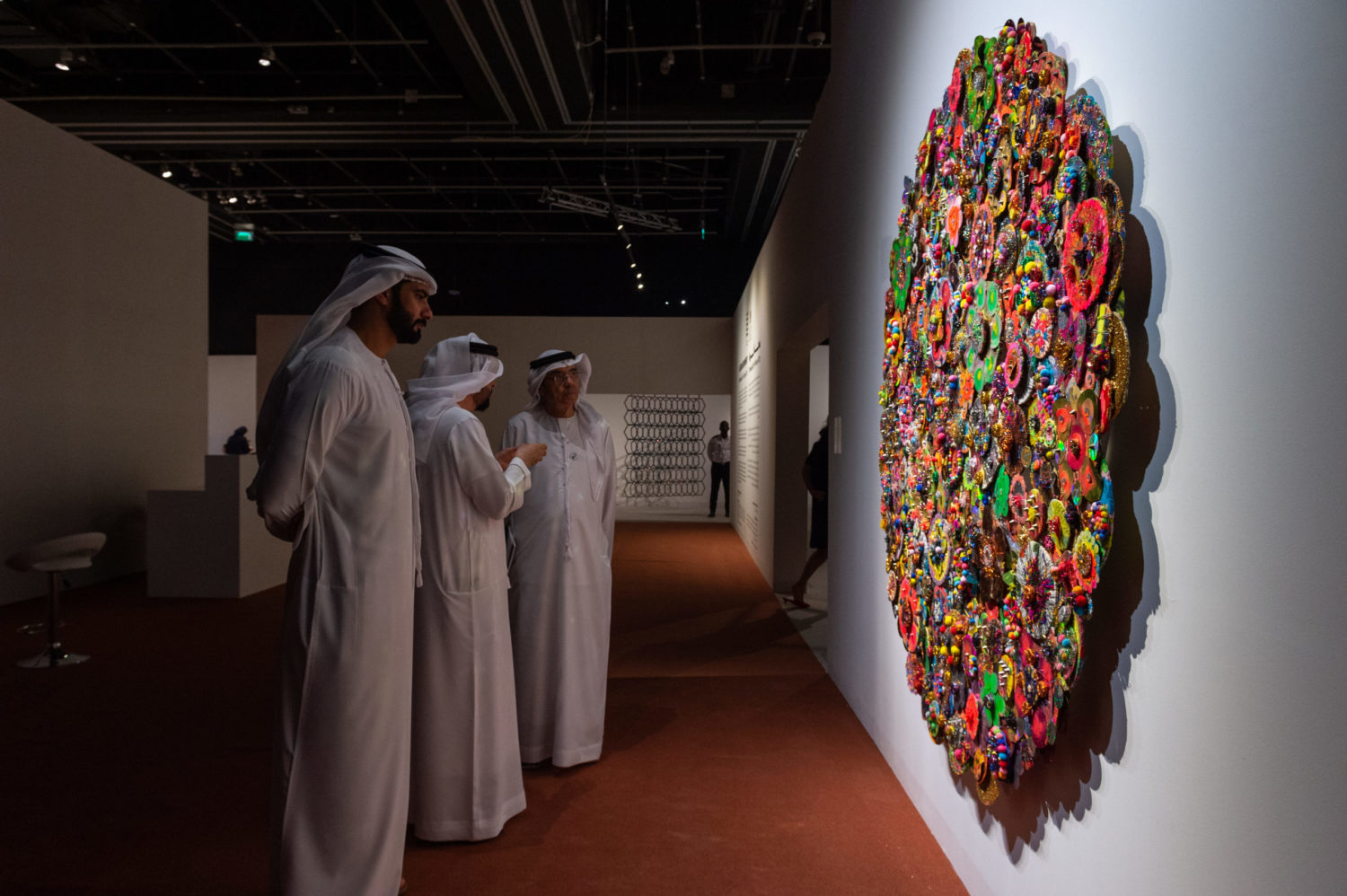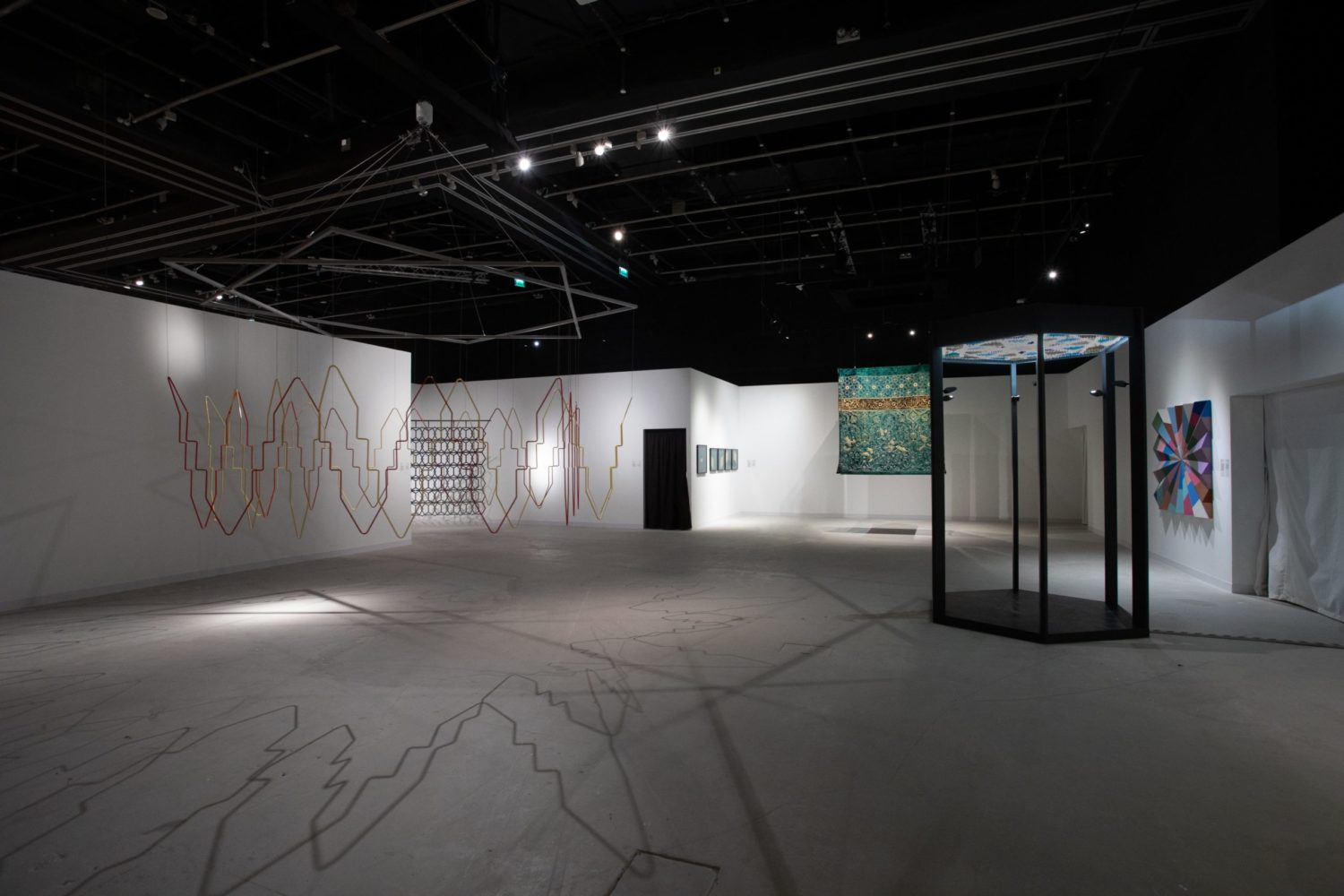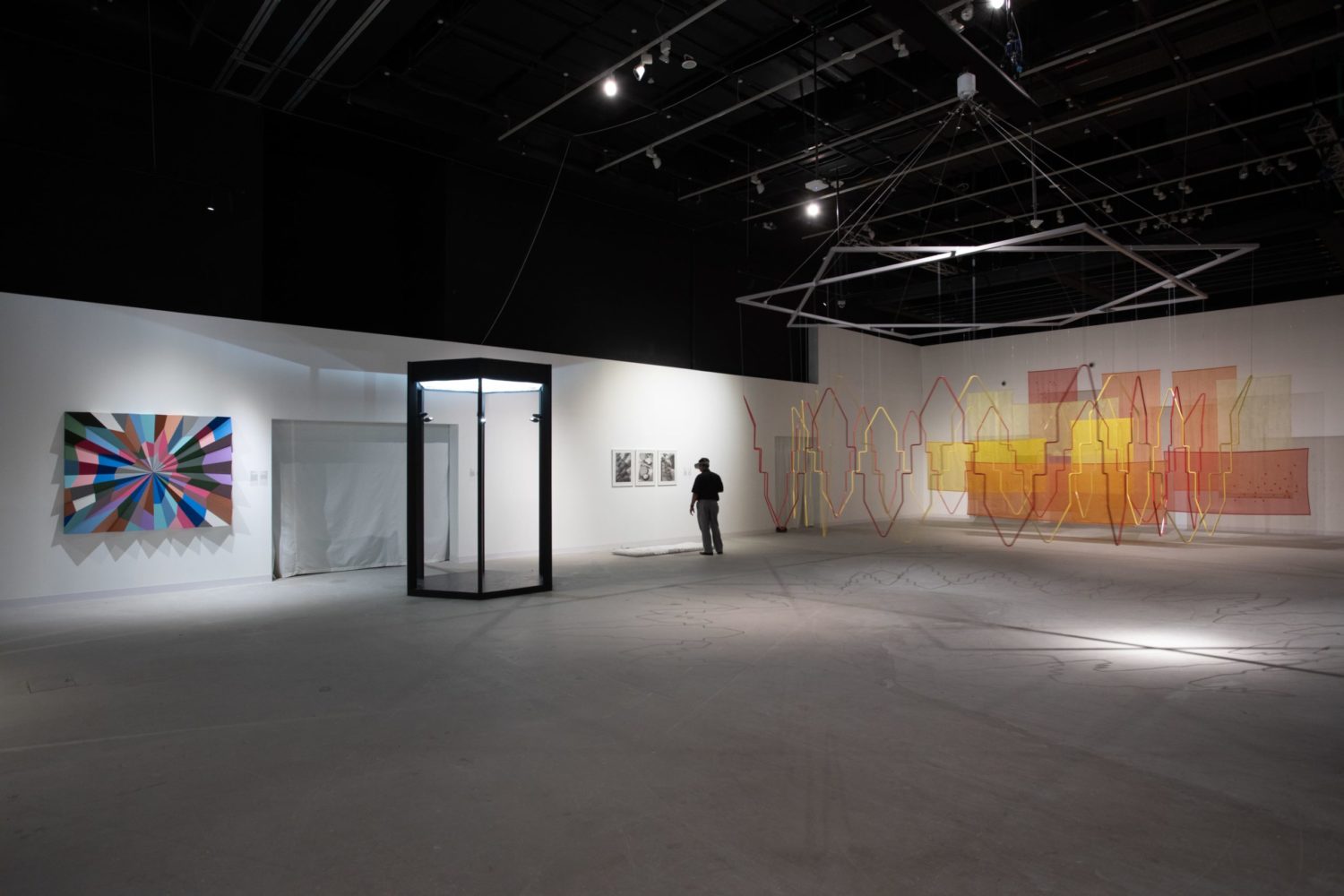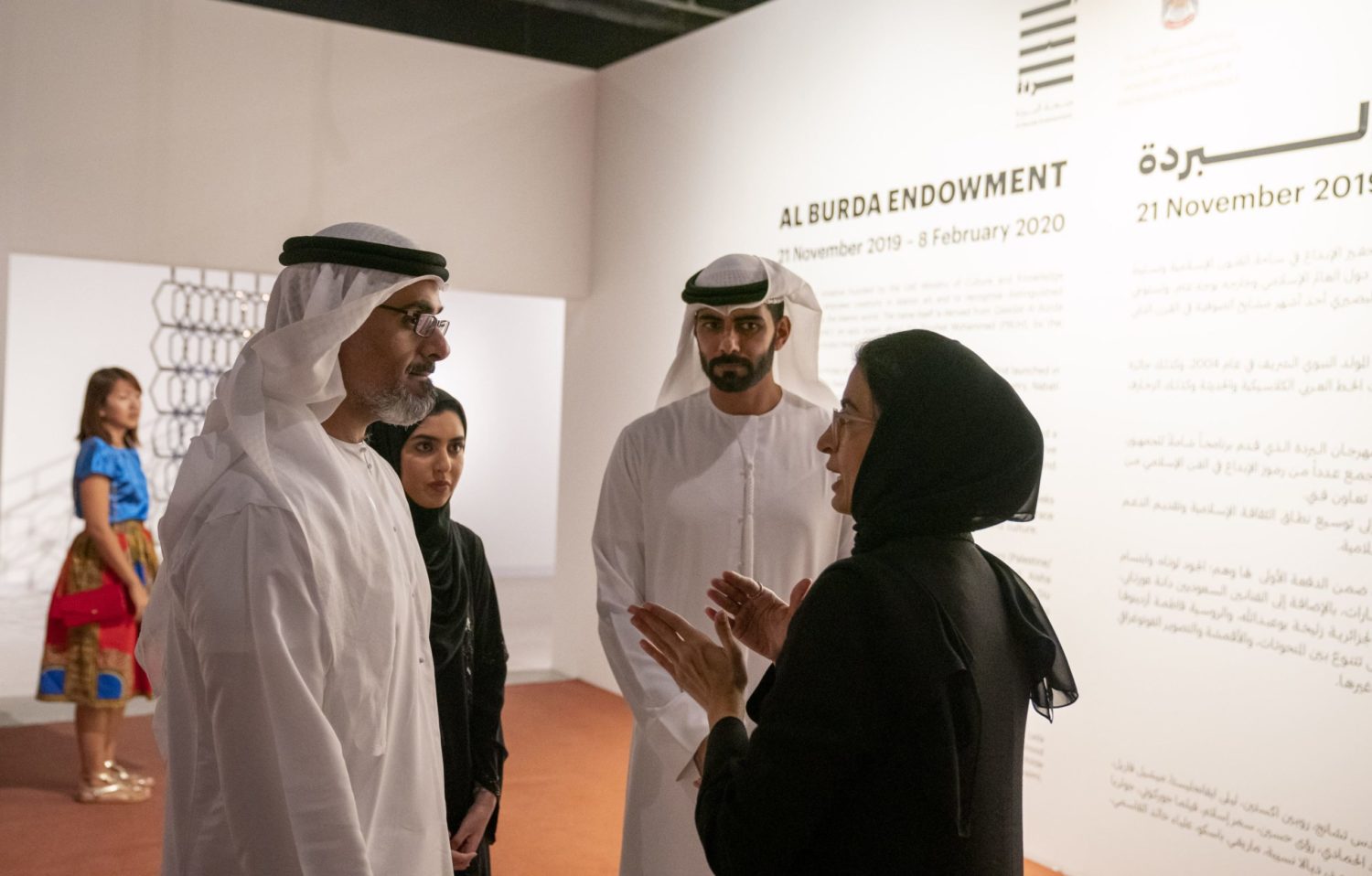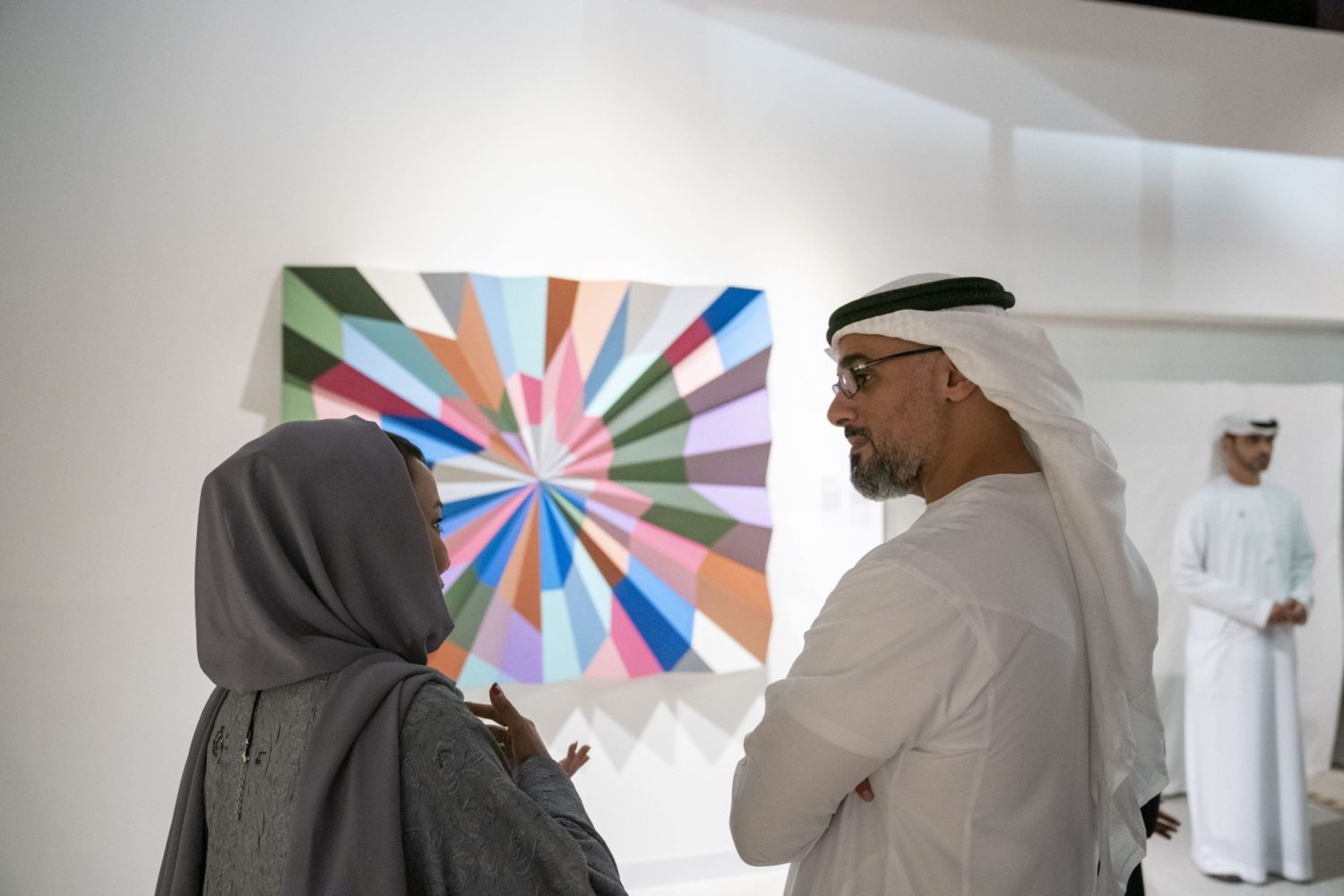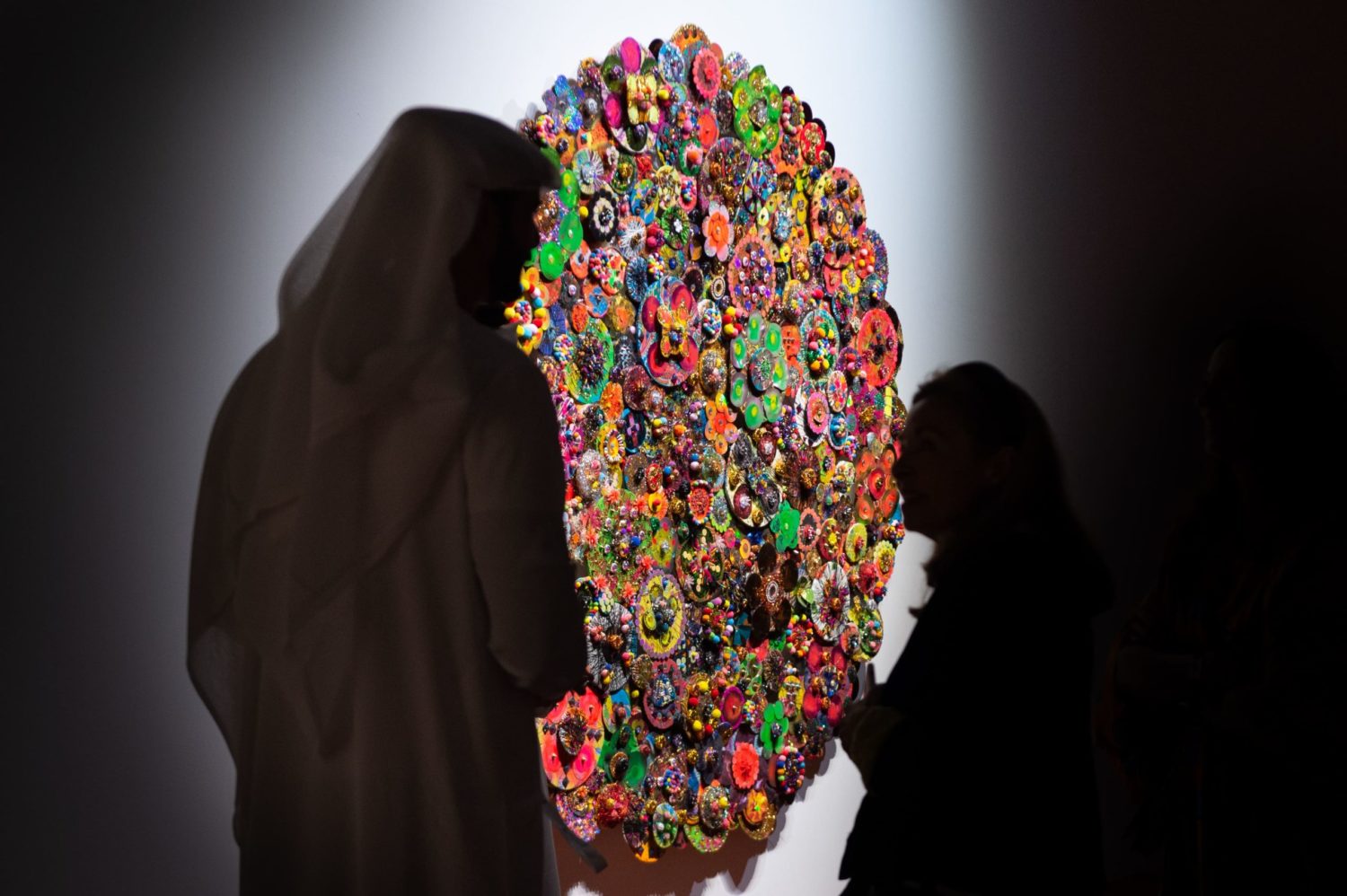- Endowment
- Abu Dhabi Art 2019

Abu Dhabi Art 2019
November 21-23, 2019
Abu Dhabi Art
Manarat Al Saadiyat
Organised and led by the Ministry of Culture and Knowledge Development (MCKD), the inaugural Al Burda Endowment Exhibition was unveiled today at the 2019 edition of Abu Dhabi Art, at Manarat Al Saadiyat.
Ten artists – Ebtisam Abdulaziz (UAE), Ammar Al Attar (UAE), Dana Awartani (Palestine/Saudi Arabia), Khalid Al Banna (UAE), Zoulikha Bouabdellah (Algeria/France), Aisha Khalid (Pakistan), Aljoud Lootah (UAE), Nasser Al Salem (Saudi Arabia) and Stanley Siu (Hong Kong) – comprise the first cohort of the Al Burda Endowment grantees with works ranging from sculpture, textile-based work and photography to installation, virtual reality, experiential projects and more. The exhibition was supported by curatorial advisors, Sam Bardaouil and Till Fellrath.
Aljoud Lootah’s work is a structural installation titled Falak, made of camel leather, copper pegs and metal structure.
Aisha Khalid has created a quadriptych metal structure of green velvet, the Islamic geometric configurations within and the ornate patterning all recall the Holy Kaaba and its kiswah. Titled The Garden of Love is Green Without Limit, her work also includes five gouache and gold leaf paintings.
Ammar Al Attar brings the malid to life in his virtual reality installation. The malid is the celebration of the Prophet Muhammad’s (PBUH) birthday, and alongside the VR installation are four photographs of the actual malid in an attempt to allow audiences to view frozen moments of the stimulating encounter.
Dana Awartani explores sustainability and cultural destruction in her work entitled Come, let me Heal Your Wounds. Let me Mend Your Broken Bones, as we Stand Here Mourning. With darning on medicinally dyed silk, Awartani’s work is both a plea to safeguard ancient civilisation in the Arab world as well as a bid to recall and rejoice in the collective history of artisanship, the knowledge of healing plants, and the venerable tradition of repairing and revering objects.
Ebtisam Abdulaziz’s work, Focal Illusion, employs themes of Islamic geometry in its use of multiple layers and mathematical structures, and calls to mind muqarnas, the honeycomb-like structures found in mosques.
Fatima Uzdenova used mixed media for her installation titled You Only Live Twice and invites audiences to engage with the materials used and meditate upon life and death in a space that is removed from our usual rapidly moving and changing surroundings. Inspired by barzakh, an in-between space, one of contemplation and introspection, Uzdenova’s work marries art and spirituality and is an attempt on her part to allow viewers to take a moment to contemplate.
Khalid Al Banna’s Dynamic of Motion uses textiles to address how traditions change and are diluted over time in a rapidly evolving consumerist era. Using fabric, paint, glue and mixed media mounted on wood, Al Banna adopts elements of Islamic art and geometry in order to convey the relationship between Emirati culture and Islam through repetitive woven floral patterns.
Nasser Al Salem’s What No Eye Has Seen, based in a green room is both calligraphic and sculptural, while being fundamentally experiential, Al Salem uses a hadith written on the walls of the green background, creating an experience akin to the chroma studio or green screen used in film to project images.
Stanley Siu’s Conversion combines cultures and brings peoples and civilisations together through an art form. Exploring the primary tools of both Islamic and Chinese calligraphy – ink brushes – Siu has created an Islamic geometric pattern, whose colour palette, conversely, took inspiration from the timeless aesthetic of century-old traditional Chinese ink paintings.
Zoulikha Bouabdellah brings a modern interpretation of Islamic geometry with details of Arab-Andalusian design with her work entitled Acrobats.
Commenting on the unveiling, His Excellency Sheikh Salem Al Qassimi, Assistant Undersecretary for Arts and Heritage at the Ministry of Culture and Knowledge Development said: “Since its inception, Al Burda has grown as a platform that celebrates Islamic art and culture from the traditional and classical to the new and contemporary. Al Burda’s journey began with an Award in 2004, which honors and recognizes international poets, calligraphers and fine artists who master Islamic art. In 2018, we launched Al Burda Festival, through which we identified a need for funding in the contemporary Islamic art and design space. The Al Burda Endowment was established as a response to this.
With the Endowment, the Ministry seeks to invest in talent with a space to explore Islamic art through an interdisciplinary approach. We invite engagement, curiosity and the exploration of culture, art and design through discussions and dialogue.
I am enormously proud to unveil the artworks by artists from around the world, encompassing religion, and cultural differences who have interpreted Islamic art in their own way.”
Al Burda is a platform founded by the UAE Ministry of Culture and Knowledge Development to empower creativity in Islamic art and to recognise distinguished artists from across the Islamic world. The name itself is derived from Qasidat Al Burda (‘Ode of the Mantle’), an epic poem about the Prophet Mohammed (PBUH), by the 12th-century Sufi mystic Imam Al Busiri.
